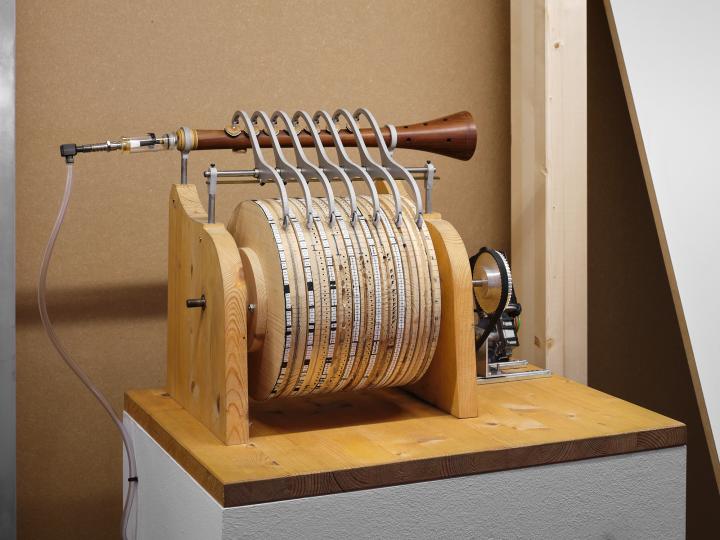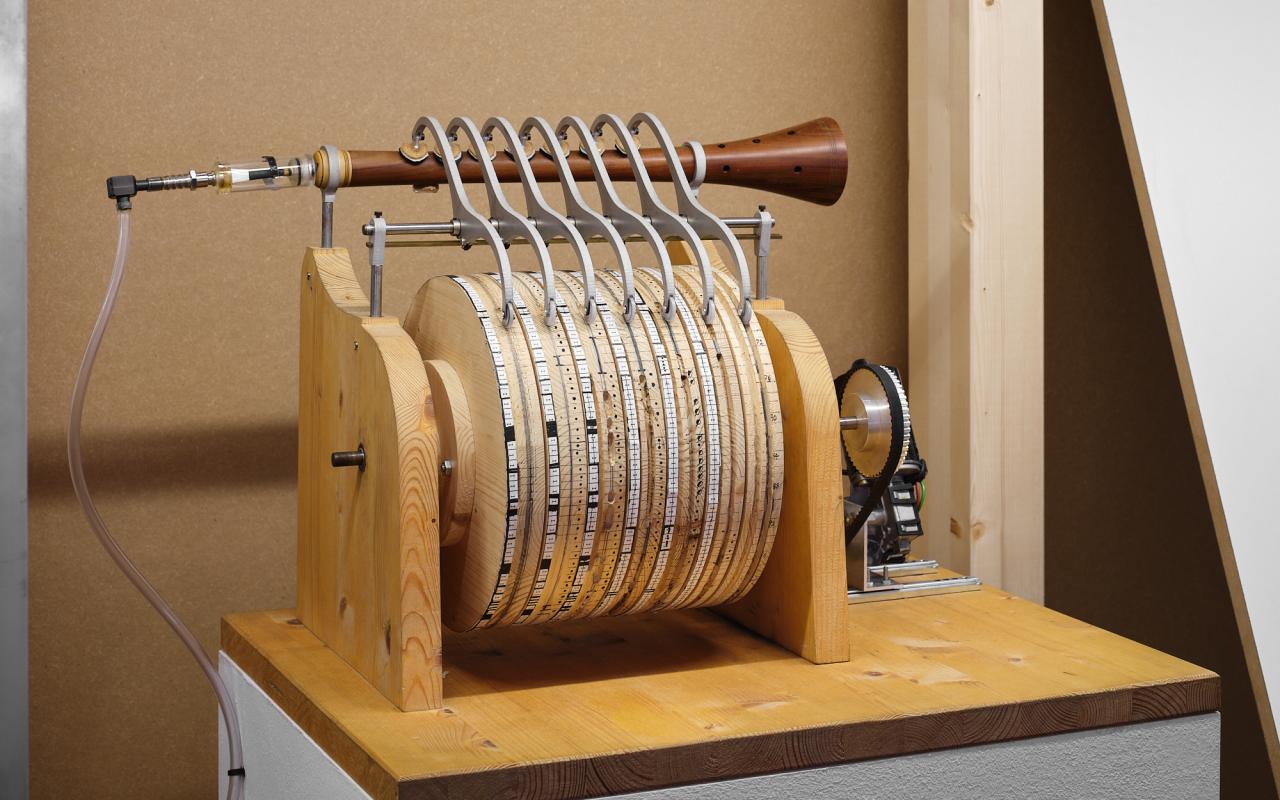Liang Zhipeng
Automatische hydraulische Orgel der Banū Mūsā ibn Shākir

- Artists
- Liang Zhipeng
- Title
- Automatische hydraulische Orgel der Banū Mūsā ibn Shākir
- Year
- c. 850 AD / 2015
- Medium / Material / Technic
- 2-part micro-archaeological reconstruction of the Banū Mūsā music automaton, animation of the functioning of the driving parts
-
The manuscript »al-Ala allatī tuzammir bi-nafsihā« (The Instrument that Plays by Itself) is a treasure of media archeology and a milestone in the history of art automata. Written by the Banū (Sons of) Mūsā ibn Shākir, it describes a programmable universal instrument and an automatic flute player. A grooved cylinder is used to freely encode the music to be played. Lian Zhipeng reconstructed this automaton consisting of a recording unit (programmer) and playback instrument (player).
The programmer registers the finger movements of a human musician via a mechanism of rings, strings, and levers, transferring the fingerings and timings onto a rotating cylinder. The markings on the individual wheels are then used to carve grooves, which are tracked by levers of the playback mechanism to reproduce the input on an ancient Iranian woodwind instrument.
Originally, the player was driven by water wheels and included a hydraulic-pneumatic mechanism that would generate a controlled air supply. Zhipeng uses a compressor to provide constant air flow.
The instrument is a shining example of the high level of skill which enabled the construction of automatically controlled objects almost 1,200 years ago. Its influence ranges from the hydraulic pipe organs by Giambattista della Porta (1535–1615) and the music boxes of the nineteenth century all the way to the punch card computer systems of the twentieth century.
